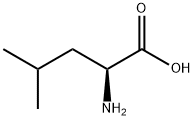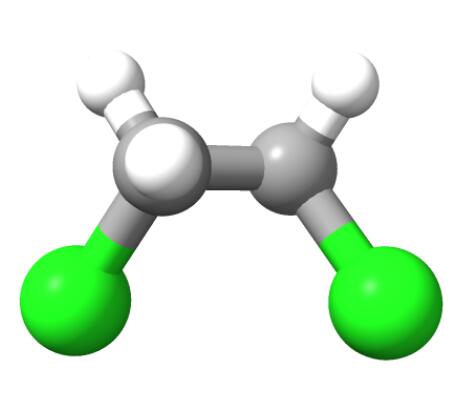Unlocking the Potential of L-Leucine: Insights into Its Synthesis, Composition, and Diverse Applications in Health and Industry
Introduction
L-Leucine, a critical player in the biochemistry of life, stands out as one of the nine essential amino acids that humans must obtain through their diet. Predominantly utilized in the synthesis of proteins, L-leucine is revered not only for its role in biological processes but also for its therapeutic potential. It is particularly vital in the context of muscle growth and repair, serving as a key trigger for protein synthesis. Beyond its nutritional value, L-leucine has captured the interest of researchers due to its potential to improve metabolic health and its role as a regulator of cellular processes. Its presence is crucial in diets, especially for athletes and individuals undergoing physical stress or recovery.

Figure 1 Characteristics of L-Leucine
Synthesis of L-Leucine
The commercial synthesis of L-leucine typically involves microbial fermentation, a method that has been refined over the years to increase yield and purity. This process starts with a carbohydrate source, such as glucose, which is fermented by specific strains of bacteria that are genetically engineered to optimize L-Leucine output. The fermentation is carefully controlled in bioreactors to maintain optimal conditions for the bacteria, ensuring efficient conversion of glucose into L-Leucine.
Main Components
Chemically, L-Leucine is known as 2-amino-4-methylpentanoic acid. Its structure features a branched chain, which classifies it as a branched-chain amino acid (BCAA), along with isoleucine and valine. This structural aspect is crucial, as it influences how L-Leucine is metabolized in the body, primarily within muscle tissue. The branched-chain configuration of L-Leucine allows it to be oxidized directly by muscle tissue, making it a significant energy source during exercise and stress. This direct metabolic pathway also means that L-leucine plays a pivotal role in maintaining nitrogen balance and supporting the immune system. Additionally, it acts as a critical signal in the regulation of protein synthesis and degradation, highlighting its essential role in muscular development and recovery.
Uses of L-Leucine
L-Leucine's uses extend beyond basic nutrition. It is paramount in protein synthesis and muscle repair, making it a favorite supplement among athletes and bodybuilders. In the medical field, L-leucine has been studied for its potential to enhance recovery during illness and surgery, owing to its ability to preserve muscle mass and improve nitrogen balance in the body. Furthermore, recent research has explored L-Leucine's capability to regulate blood sugar levels and its potential role in supporting the treatment of conditions like type 2 diabetes. Its influence on mTOR signaling pathways also suggests that L-leucine may play a role in longevity and anti-aging strategies. Additionally, L-leucine is being investigated for its effects on mental health, including potential benefits in treating mood disorders and enhancing cognitive function through its impact on neurotransmitter regulation. Its role in stress response and adaptation suggests that L-Leucine could help improve resilience to psychological stressors. This broad range of applications underscores the amino acid's importance in both physical and mental health spheres, paving the way for innovative health solutions based on its unique properties.
Storage Methods
Proper storage of L-leucine is essential to maintain its efficacy and extend its shelf life. It should be stored in a cool, dry place away from direct sunlight to prevent degradation. Containers should be airtight to keep out moisture and other contaminants that can affect their purity. Under optimal conditions, L-Leucine can be stored for several years without significant loss of quality.
Conclusion
L-Leucine is more than just a building block for proteins; it is a multifaceted amino acid with a wide range of applications in health and disease management. Its synthesis through fermentation technology has allowed for large-scale production, supporting its extensive use in nutritional supplements and therapeutic applications. For professionals in the field of chemistry and biochemistry, understanding the nuances of L-leucine—from its synthesis to its storage—is crucial for leveraging its full potential in both research and application.
![Article illustration]() References
References
[1]Gliński J, Chavepeyer G, Platten J K. Surface properties of aqueous solutions of L-leucine[J]. Biophysical Chemistry, 2000, 84(2): 99-103.
[2]Harper A E, Benton D A, Elvehjem C A. L-Leucine, an isoleucine antagonist in the rat[J]. Archives of Biochemistry and Biophysics, 1955, 57(1): 1-12.
See also
Lastest Price from L-Leucine manufacturers

US $1.00/PCS2025-06-27
- CAS:
- 61-90-5
- Min. Order:
- 1PCS
- Purity:
- 99%
- Supply Ability:
- 10 mt

US $0.00-0.00/kgs2025-06-19
- CAS:
- 61-90-5
- Min. Order:
- 25kgs
- Purity:
- ≥99.0%
- Supply Ability:
- 100 tons


